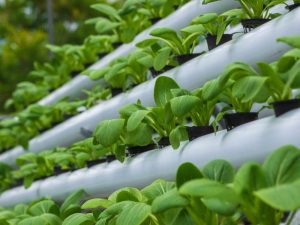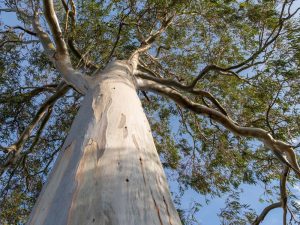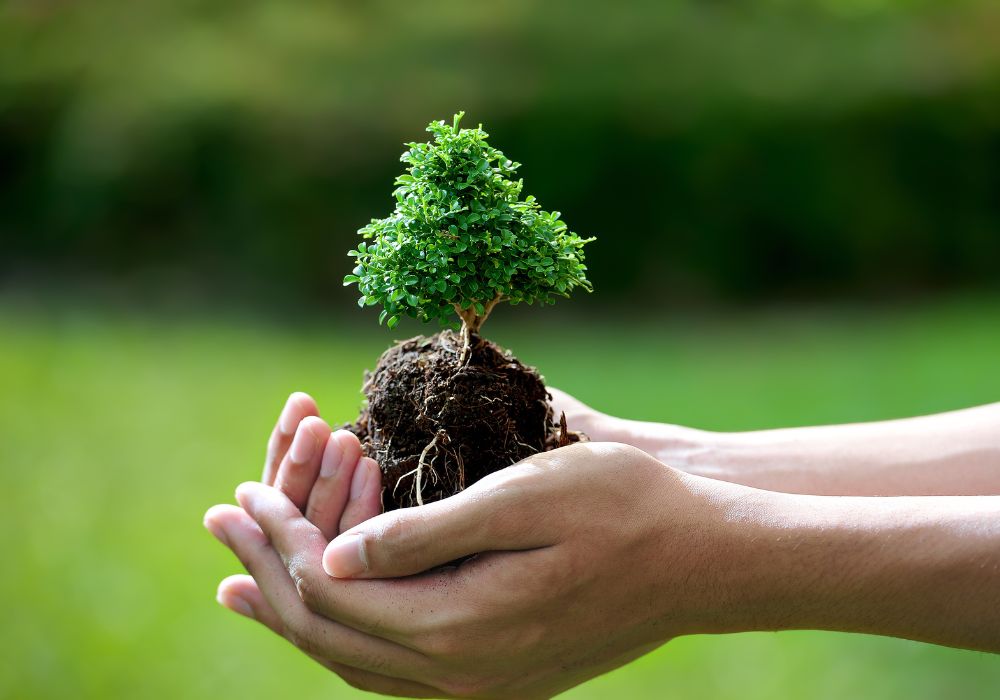
Choosing the ideal trees for your little garden could make all the difference. If you plant the wrong kind , you may find yourself with either too much or too little shade or a limited area, so restricting everything else trying to flourish. Emphasizing trees that won’t take over your area, this guide will explore the best options for small gardens. Considering the mature size and growth patterns of the tree will help you to transform even a small garden into a rich, welcoming haven.
Benefits of Planting Trees in Small Gardens
Contents
Introducing trees into a small garden can significantly enhance its appearance and functionality. Despite the limited space, the strategic choice of the right species can bring a multitude of benefits, from environmental to aesthetic. Let’s explore how incorporating these elements can transform your small garden into a thriving, beneficial space.
Environmental Improvement
Trees are natural air purifiers. By planting even a single one in your garden, you contribute to cleaning the air. They absorb pollutants like nitrogen oxides, ammonia, and sulfur dioxide through their leaves and bark. This process not only improves air quality but also contributes to a cooler garden environment. In urban areas, where heat accumulation is a problem, a well-placed tree can reduce the need for air conditioning, leading to energy savings.
Enhanced Privacy and Sound Barrier
In close-quarter living, privacy is a luxury. A strategically placed tree can provide a natural screen, giving your garden a secluded feel without the need for fencing or artificial barriers. Additionally, they act as sound barriers, absorbing noise pollution from nearby streets and neighbors. This makes your garden not only a visual retreat but also a quiet, serene space where you can relax without the intrusion of unwanted noise.

Aesthetic Appeal and Property Value
The aesthetic value of well-chosen trees in a garden cannot be overstated. They add texture, color, and structure to the landscape, which can make even the smallest space feel more substantial and designed. From the delicate blossoms of a cherry species in spring to the rich, full foliage of an oak in summer, they provide seasonal interest and variety. Moreover, gardens that are thoughtfully landscaped with these are often considered more attractive, which can significantly increase the property’s market value.
Wildlife Habitat
Even in urban environments, small gardens can serve as crucial habitats for wildlife. Trees attract a variety of birds, insects, and sometimes even small mammals, bringing life to your garden. They offer shelter and food resources, creating a mini ecosystem right outside your door. Watching wildlife can add to your enjoyment of your garden, providing an opportunity to observe nature up close in your daily life.
Optimizing Space with Vertical Interest
In smaller areas especially, trees give gardens a vertical element. These grow upward rather than outward, drawing the eye skyward and enlarging the garden. This vertical interest can be a clever approach to make use of airspace without compromising ground area, are likely required for other plants or garden accents.
Sustainable Garden Practices
Including trees in your garden supports environmentally friendly methods of gardening. These control rainfall and assist in stabilizing the ground. Their roots stop runoff by absorbing water, so lessening erosion and water pollution. By lowering the ground’s solar exposure and maintaining soil moist for longer times, the shade given by trees can also help to save water.

Including trees in a small garden produces a healthier, more private, and environmentally friendly space rather than only beautifying the area. Selecting appropriate kinds will help you to enjoy the advantages of a more vivid, greener garden without sacrificing your limited area. Think about how these natural elements might be integral components of your garden’s ecosystem as well as decorative accents as you design it.
Considerations for Selecting Trees
Choosing the right trees for a small garden involves more than just picking species you find attractive. It’s about understanding the unique constraints and opportunities of your space. Here are key considerations to keep in mind to ensure that the trees you select will thrive and enhance your garden without causing future issues.
Understanding Root Systems
The kind of root system is critical when choosing trees for your small garden. Aggressive, deep-rooted trees can actually endanger the structural integrity of surrounding buildings and hardscape features including driveways and sidewalks.
Under foundations, these roots can cause uplift or cracking; they can also disturb underground utilities, resulting in costly repairs. Selecting trees with shallow, non-invasive root systems will help to prevent such problems.
Such species are less likely to damage any infrastructure or mess your garden design. These root systems also help the trees to coexist with other plants, so enabling you to design a varied and rich garden free from the danger of one plant taking over the area because of its subterranean development.

Size and Growth Rate
Given a tree’s mature scale, particularly in a small garden, this is quite important. Planting a tree without knowing its size often results in a small and shadowing garden. Not only for your garden but also for your house, too tall or wide trees can block natural light, so darkening and restricting your living environment. Moreover, big trees could need regular pruning to stay within limits, which increases your responsibilities for maintaining your garden.
Choose species whose smaller mature sizes and controllable growth rates help to avoid these complications. Small gardens would be especially suited for dwarf variants since they resemble the ecological and aesthetic advantages of their larger counterparts without running the danger of overgrowth. Selecting the correct size and type of tree will help you to guarantee that your garden stays balanced and that every plant has the light and space required for growth.
Canopy Spread
The width of a tree’s canopy is a crucial aspect to consider, just as important as its height. A canopy spreads out as it matures, casting shadows that can significantly alter the microclimate of your garden. This shading can be beneficial, for example, creating a cool, shaded area ideal for hosting gatherings or for plants that thrive away from direct sunlight.
However, it can also pose challenges by overshadowing plants that need full sun to flourish, potentially stunting their growth or causing them to wither. Therefore, when selecting a tree, consider not only the immediate aesthetics but also the long-term impact of its shade.
Plan the placement of trees to enhance the garden’s functionality without compromising the light needs of other plants. For gardens with limited space, consider species with upright growth habits that provide shade without excessive horizontal spread.
Seasonal Changes
Evaluating a tree’s appearance throughout the seasons is vital, particularly if your garden serves as a year-round visual centerpiece. Many trees offer striking visual displays, cherry species with their iconic spring blossoms, maple trees with vibrant fall colors. Yet, these same trees can appear sparse and less appealing during the off-seasons. If you desire a garden that remains visually appealing throughout the year, select trees that maintain interest across all seasons.
Look for species with features that stand out beyond leaf changes, such as interesting bark textures, colorful fruits that linger into winter, or evergreen foliage that provides constant color and texture. Species like birches with their peeling white bark, hollies with bright red berries, or pines with evergreen needles add visual interest even in the depths of winter.
By choosing species that are not only beautiful but also maintain their decorative appeal year-round, you can ensure that your garden remains an engaging and attractive space no matter the season.

Maintenance Requirements
Maintaining the color of your garden calls for several chores, from pest control to pruning to soil condition monitoring. While some species may need particular soil amendments to flourish, others demand regular pruning to keep their form and encourage good growth. Evaluating the time and effort you are ready to devote to these pursuits is absolutely vital.
Choosing less maintenance-requiring varieties will greatly cut your garden work and free more time for you to just appreciate the peace and beauty of your outdoor area. For instance, species that naturally preserve a compact form or those resistant to pests and diseases will help to reduce the need for continuous interventions.
Think also about the effects keeping your garden has on the surroundings. Your local ecosystem may suffer more from the use of pesticides and fertilizers overall. Selecting naturally occurring species in your environment helps to reduce the need for chemical assistance by encouraging a more sustainable gardening method. This method not only saves money and time but also supports local wildlife and helps your neighbourhood to be healthy.
Climate and Soil Adaptability
The green components in your garden’s success mostly depends on their fit with the soil conditions and local temperature. Not every species will thrive in any one environment; some need particular soil kinds or temperatures. Examining the hardiness zone of your region is crucial and should be matched to the requirements of the species you wish to grow. This guarantees that every plant can survive the particular winter temperatures and other environmental conditions.
Moreover, the type of soil you use will greatly influence the development and general condition of your garden. While some species prefer more clay-heavy substrates, others depend on well-drained, sandy soil. Knowing the soil needs and planning your garden will help to avoid many typical problems with inadequate development and plant health. For example, changing your soil to enhance its pH, nutrient concentration, and structure will help your garden plants grow rather robustly.
Not only will a better garden result from making sure your selected species are suited for the soil and temperature of your area, but it also lessens the need for interventions including soil amendments and climate control strategies. Well-suited to their surroundings, plants that show more resilience and stronger growth naturally make your gardening efforts more fulfilling and less demanding.
By taking these considerations into account, you’ll be better equipped to choose trees that not only fit your garden’s aesthetic but also its practical constraints, ensuring a harmonious and sustainable garden environment.

Top Tree Species for Small Gardens
Selecting the right species for a small garden can enhance its charm and functionality without overwhelming the space. Here are some of the best picks that are known for their manageable size, attractive appearance, and overall suitability for compact areas.
Japanese Maple (Acer palmatum)
Japanese Maple is celebrated for its graceful form and stunning fall colors, ranging from vibrant reds to deep purples. This species typically grows slowly and can be pruned to maintain a desired size, making it ideal for small spaces. Its intricate leaf patterns and variety of colors provide visual interest throughout the year.
Crabapple (Malus spp.)
Crabapple offers spectacular spring blossoms and produces attractive fruit that can persist into winter, providing food for wildlife. This fruit tree comes in several dwarf varieties that fit beautifully in limited spaces. Their resilience to many growing conditions and their dramatic seasonal displays make them a favorite.
Eastern Redbud (Cercis canadensis)
Eastern Redbud is a hardy species that produces stunning pink flowers in early spring, even before its leaves appear. It has a compact form and heart-shaped leaves that turn yellow in the fall. This species is particularly striking when planted against a backdrop that highlights its springtime floral display.
Dogwood (Cornus)
Dogwood species are renowned for their beautiful flowers, which appear in spring, and their layered branches, which add structure and interest to any garden. They also display colorful autumn foliage and bright winter berries. Dogwoods thrive under the canopy of taller species, making them perfect for layered garden designs.
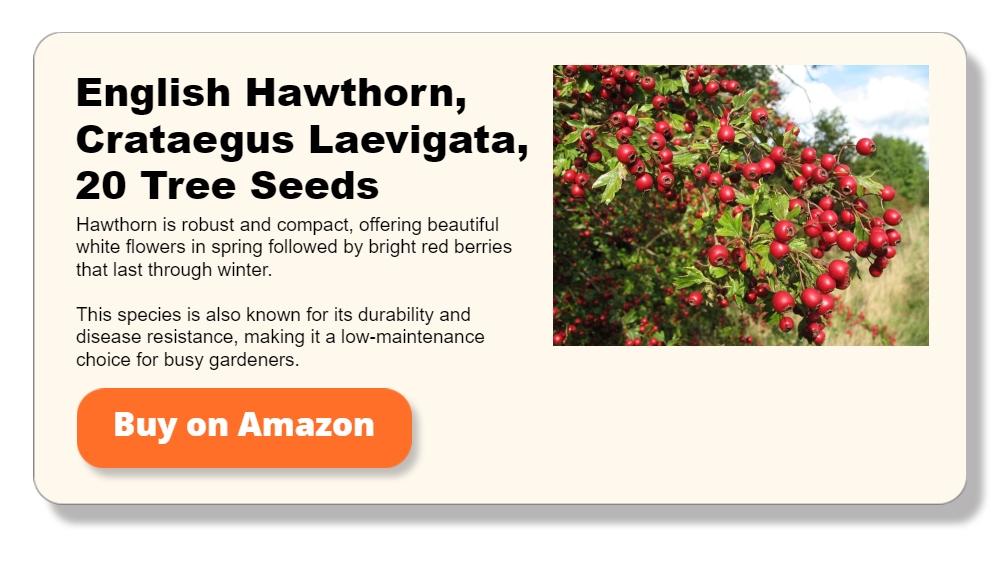
Hawthorn (Crataegus)
Hawthorn is robust and compact, offering beautiful white flowers in spring followed by bright red berries that last through winter. This species is also known for its durability and disease resistance, making it a low-maintenance choice for busy gardeners.
Boxwood (Buxus)
Boxwood is a versatile shrub that can be trimmed into nearly any shape. This makes it excellent for small gardens where every inch matters. It’s often used to create borders or decorative forms, providing structure and year-round greenery.
These species are well-suited for small garden spaces, where they can provide color, texture, and structure without becoming overpowering. Each has unique qualities that can complement various garden styles and preferences, ensuring that even the smallest outdoor spaces can be transformed into lush, inviting retreats.
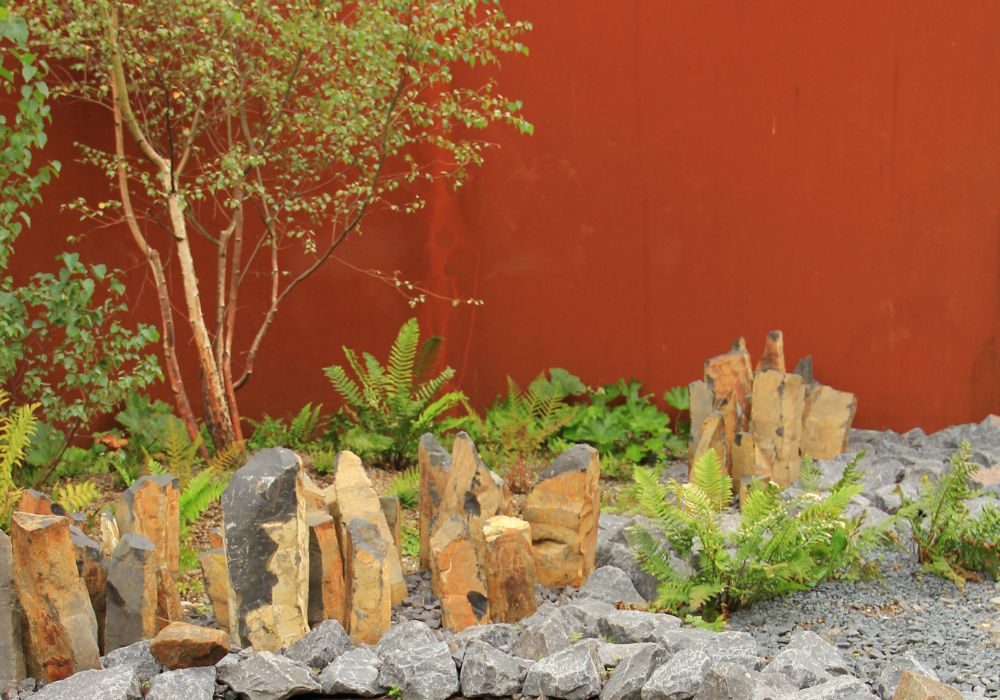
Planting and Maintenance Tips for Small Gardens
Planting and maintaining smaller green areas successfully calls for careful thought to make sure every plant grows without overtaking the yard. These basic guidelines on planting and maintaining your garden will help it to remain vibrant all year long.
Choosing the Right Location
Selecting the proper site comes first in planting trees. Think on each species’ light needs as well as the shadow mature plants will create. While shade-tolerant varieties can be close to buildings or under the canopy of bigger plants, position plants so that those needing more sunlight are in unobstructed areas. Consider also the visual impact your planting design should produce, so making sure all the plants are aesthetically pleasing.
Preparing the Soil
A good garden’s foundation is good soil. To increase the fertility and drainage of your ground, loosen it and then add compost or well-rotted manure before planting. Particularly if your soil is sandy or clay-heavy, this is a vital stage. Testing the pH of the soil can also help you decide which additions would fit the particular requirements of the selected plants.
Planting Techniques
Dig two times the width of your plant’s root ball but no deeper when planting. This lets the roots disperse naturally without dragging the plant too low into the ground. Make sure the plant is straight forward and gently but firmly fill the hole to prevent air pockets that would dry out the roots. To help lower transplant shock and settle the soil around the roots, water completely after planting.
Watering Wisely
During the first few years following planting, water is vital for maintaining your garden. Sometimes rather than regular shallow waterings, give a deep watering to promote deeper root development and raise drought tolerance. Around your plants, mulch will help to control soil temperature, slow down weed growth, and hold moisture in the ground.
Pruning and Shaping
Regular pruning doesn’t just keep your garden looking tidy—it also promotes healthy growth and flowering. Prune in late winter or early spring when the plants are dormant. This practice helps maintain the shape and size of your plants, ensuring they don’t overshadow their neighbors. Always use clean, sharp tools to make precise cuts and prevent disease.
Pest and Disease Management
Keep an eye out for signs of pests and diseases, such as discolored leaves, stunted growth, or unusual leaf spots. Early detection is key to managing these issues effectively. Prefer natural and environmentally friendly pest control methods, like introducing beneficial insects or using organic sprays. Regularly cleaning up fallen leaves and debris can also help prevent the spread of diseases.
Long-Term Care
As your garden matures, its maintenance needs may change. Adjust your care routine based on the growth and development of your plants. This might include changing fertilization practices, modifying your watering schedule, and updating mulch. Observing your garden throughout the seasons and adapting your care approach will keep it in top condition year-round.
These planting and maintenance tips are essential for nurturing a small garden that remains manageable and beautiful. By paying close attention to the needs of each plant and regularly maintaining your garden, you can enjoy a lush, healthy outdoor space for years to come.
Conclusion
Selecting the right species for a small garden brings numerous benefits, from enhancing air quality and providing natural cooling to increasing property value and aesthetic appeal. It’s crucial to choose species with appropriate sizes, growth rates, and root systems to ensure they complement rather than overwhelm the space. By carefully considering these factors, gardeners can transform even the smallest spaces into lush, functional, and sustainable green havens.


